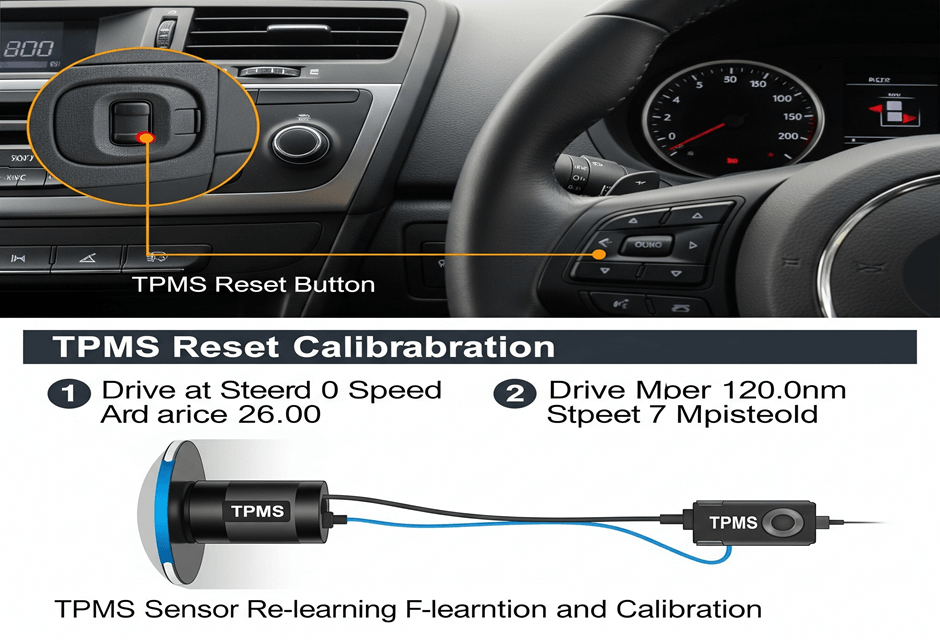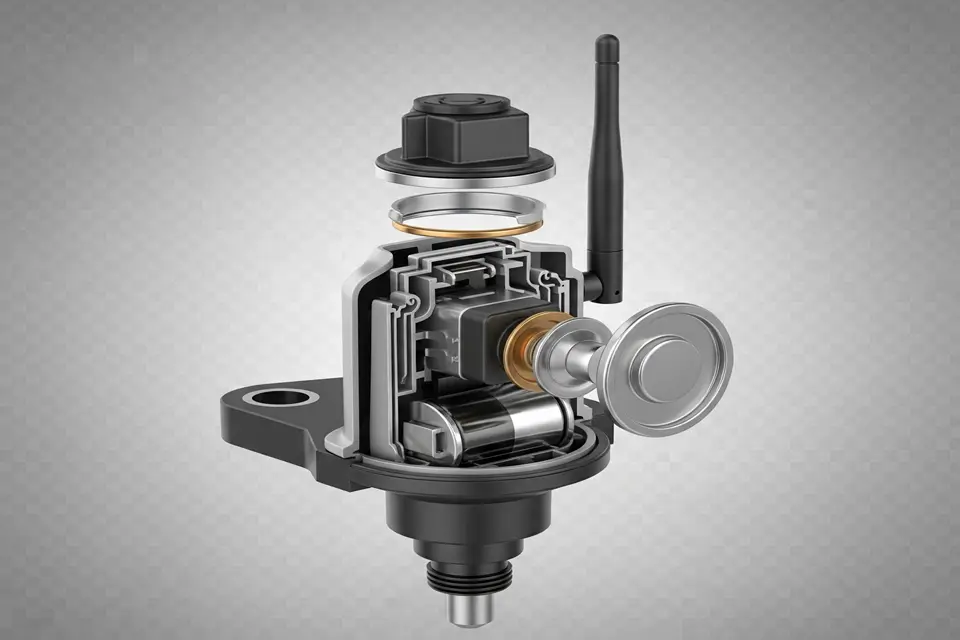Drivers see warning lights on their dashboard every day. You might ask: what is TPMS in a car? TPMS stands for Tire Pressure Monitoring System. This system monitors your tire pressure. Vehicle safety depends on this important feature. Modern automobiles include this system as standard equipment.
Understanding TPMS: Tire Pressure Monitoring System Meaning

The tire pressure monitoring system meaning covers more than basic pressure checks. TPMS monitors air pressure in tires continuously. This system alerts drivers when tire pressure drops below safe levels. The TREAD Act made this automobile regulation mandatory. Car manufacturers must install TPMS in all vehicles after 2007. This car maintenance feature protects drivers and passengers.
How TPMS Works: Direct vs Indirect TPMS Systems
TPMS systems work in two different ways. Vehicle owners should understand how TPMS works. Two main types exist: direct and indirect tire pressure monitoring systems.
Direct Tire Pressure Monitor
A direct tire pressure monitor uses tire pressure sensors in each wheel. These TPMS sensors attach to the tire valve. Sensors measure air pressure in tires directly. The system sends real-time data to your vehicle’s computer. The tire pressure light on dashboard activates when pressure drops.
Direct TPMS provides these benefits:
- Sensors give precise pressure readings for each tire
- Systems monitor pressure in real-time
- Drivers know which specific tire has pressure issues
- Direct systems offer better accuracy than indirect systems
Indirect Tire Pressure Monitor
An indirect tire pressure monitor works differently. This system uses wheel speed sensor data from the ABS (Anti-lock Braking System). Sensors detect tire pressure issues through wheel rotation speed. Underinflated tires have smaller diameters. These tires rotate faster than properly inflated tires. The system detects this speed difference. The tire pressure indicator activates when problems occur.
What is TPMS Sensor and Battery Life
A TPMS sensor measures tire pressure electronically. Sensors transmit data wirelessly to your vehicle’s computer. Internal batteries power these sensors. Tire sensor battery life lasts 5-10 years typically. Usage and weather conditions affect battery life.
Failing sensors cause these problems:
- TPMS malfunction indicator warnings appear
- Pressure readings become inconsistent
- Dashboard warning light stays on constantly
- Complete system failure occurs
TPMS Warning Light: Dashboard Alert System
The TPMS warning light looks like a horseshoe with an exclamation point. This tire pressure light on dashboard serves different purposes. Drivers should understand these warning signals.
- Steady light means low tire pressure warning in one or more tires
- Flashing light indicates TPMS malfunction indicator or system failure
- Light stays on after inflation suggests sensor problems or need for TPMS sensor calibration
Common TPMS Issues and Solutions
Symptoms of Bad TPMS Sensor
Drivers should recognize symptoms of bad TPMS sensor. These signs help prevent serious tire pressure issues:
- Pressure warnings appear inconsistently
- TPMS light won’t turn off after proper tire inflation
- System shows no warning despite visibly underinflated tires
- Vehicle displays system malfunction messages
TPMS Reset Button and Calibration Process

Most vehicles include a TPMS reset button. Manufacturers place this button beneath the steering wheel or in the glove compartment. Drivers must reset TPMS after tire change, tire rotation, or sensor replacement. This process ensures accurate pressure monitoring.
The reset process includes these steps:
- Drivers inflate all tires to proper pressure
- Owners locate the TPMS reset button
- Users hold the button until the tire pressure indicator blinks
- Drivers complete TPMS sensor calibration by driving the vehicle
TPMS Issues in Older Vehicles
Older vehicles experience more TPMS issues in older vehicles. Aging sensor batteries cause frequent problems. Older systems need regular maintenance. Sensors may require replacement or complete system updates.
Vehicle-Specific TPMS Information
TPMS on Honda Accord
Honda Accord models use direct TPMS systems. Each wheel contains individual sensors. TPMS on Honda Accord requires reset procedures after tire service. Sensors typically need replacement every 7-10 years.
TPMS on Toyota
Toyota vehicles feature direct tire pressure monitoring systems. TPMS on Toyota models includes easy reset procedures. Drivers access reset functions through the vehicle’s menu system or dedicated reset buttons.
TPMS Sensor Replacement Cost and Maintenance

TPMS sensor replacement cost varies by vehicle type and sensor quality. Replacement costs range from $50-$200 per sensor. Installation labor adds to the total cost. Professional installation ensures proper TPMS sensor calibration and system functionality.
Regular tire pressure maintenance includes these tasks:
- Drivers check pressure monthly with a tire pressure gauge
- Owners inspect tires visually for damage or wear
- Professionals test sensors during routine car maintenance
- Drivers respond promptly to dashboard warning light alerts
Difference Between TPMS and Tire Pressure Light
Drivers should understand the difference between TPMS and tire pressure light. TPMS refers to the complete monitoring system. The tire pressure light indicates specific pressure problems or system malfunctions. These terms describe different parts of the same safety system.
Manual vs Automatic Tire Pressure Check
TPMS provides automatic pressure monitoring. Manual vs automatic tire pressure check methods both serve important safety roles. Regular manual checks with a tire pressure gauge complement TPMS monitoring. Manual checks detect gradual pressure loss that might not trigger immediate warnings.
Legal Requirements: Tire Pressure Monitoring Law
The tire pressure monitoring law requires TPMS installation in passenger vehicles. This automobile regulation applies to all vehicles manufactured after September 2007. Lawmakers created this rule to reduce tire blowout incidents. The law improves overall vehicle safety through consistent tire pressure monitoring.
Benefits of Proper Tire Pressure Monitoring
Proper tire inflation through effective tire pressure monitoring provides many benefits:
Vehicle safety improves significantly. Properly inflated tires reduce tire blowout risks. Correct pressure improves vehicle handling. Fuel economy increases with optimal tire pressure. Proper inflation reduces rolling resistance. Tire life extends considerably. Correct pressure prevents irregular wear patterns. Vehicle performance improves noticeably. Optimal pressure ensures maximum tire contact with road surfaces.
Spare Tire Considerations
Most spare tire installations lack TPMS sensors. This situation may trigger system warnings. Drivers should understand this limitation. Temporary spare tire usage affects system readings. This knowledge helps drivers distinguish between actual tire pressure issues and spare tire effects.
Conclusion
TPMS represents major advancement in vehicle safety technology. This system provides drivers with real-time tire pressure information. Proper monitoring prevents dangerous underinflated tires situations. Drivers should understand how this tire monitoring system works. Recognition of warning signs ensures vehicle safety. Proper tire pressure maintenance keeps vehicles operating safely.
Regular TPMS attention prevents problems. Routine tire pressure maintenance ensures optimal performance. Prompt response to dashboard warning light alerts maintains safety. Sensor replacement needs professional attention. System calibration requires proper procedures. Regular maintenance keeps vehicles operating safely and efficiently. Understanding TPMS functionality helps drivers make informed decisions. Vehicle owners should prioritize their tire pressure monitoring needs.

